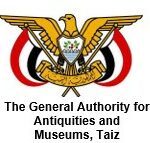First Project Documentation Project of Al-Qahira Citadel – Taiz
Al-Qahira Citadel ..... A Testament to Yemen’s Heritage
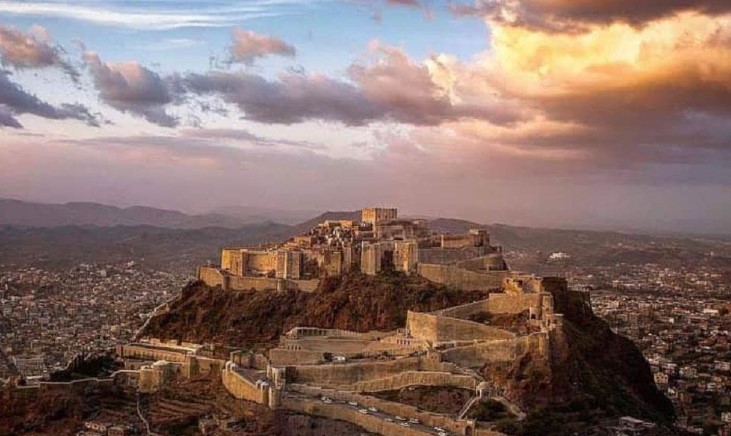
Al-Qahira Citadel stands as a living testament to Yemen’s rich history and cultural heritage, serving as an enduring symbol of the nation’s glorious past. The citadel’s origins trace back to ancient, pre-Islamic times, making it not only a historical treasure but also a structure of immense architectural and cultural significance. However, this remarkable site has faced significant challenges in recent years, suffering severe damage during the Yemeni Civil War. Despite these hardships, the citadel continues to hold a vital place in Yemen’s national identity, proudly remaining a beacon of resilience and hope for the people of Taiz and beyond.
Led by the Heritage of Peace Foundation with the General Authority for Antiquities and Museums in Taiz, this ambitious project to document and preserve the Al-Qahira Citadel, supported by international funding from the International Alliance for the Protection of Heritage in Conflict Areas, aims to protect the citadel from further deterioration and restore its grandeur for future generations.
The restoration project is about far more than conserving physical structures; it is about reviving a cultural treasure that connects the Yemeni people to their history and instills pride in their national identity. Combining emergency structural interventions with a long-term vision for preserving the citadel’s fragile features, the project also actively engages the surrounding community to ensure the site’s enduring significance.
The importance of Al-Qahira Citadel
Al-Qahira Citadel in Taiz, Yemen, represents a unique and irreplaceable cultural heritage site. Nestled on the northern slopes of Mount Sabr at an elevation of 1,500 meters above sea level, Al-Qahira Citadel holds a commanding position overlooking the ancient city of Taiz. This iconic structure forms the nucleus of old Taiz, a strategically significant site that has witnessed critical historical events across centuries.
The citadel not only served as a military fortress protecting the region but also represented architectural ingenuity, with its fortified walls, intricate designs, and expansive structures. Its architectural elements reflect the advanced craftsmanship of its era, featuring palaces, terraces, water reservoirs, and secret tunnels. Beyond its physical attributes, the citadel has been deeply rooted in the identity and pride of local communities, tying generations of Yemenis to their rich history and heritage.
By highlighting its role across various historical periods, the restoration project seeks to remind people of the citadel’s cultural and historical importance. Despite the extensive damage it has endured, Al-Qahira Citadel stands as a symbol of resilience, emphasizing the critical need to preserve such landmarks as part of humanity’s shared heritage.
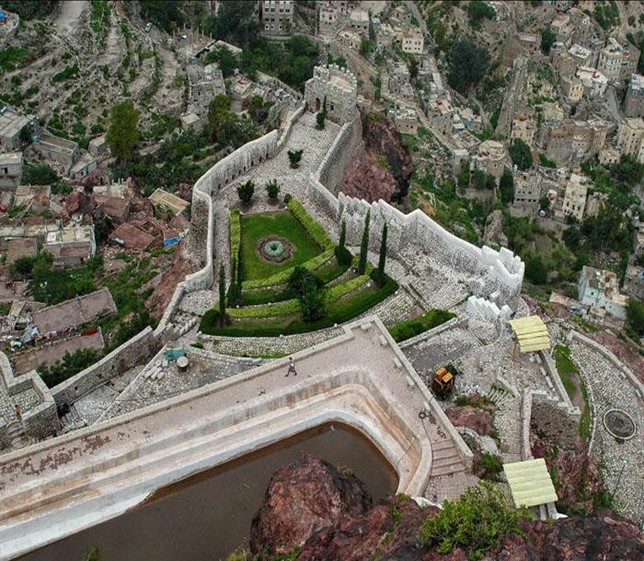
Over the centuries, Al-Qahira Citadel has faced multiple threats due to its turbulent history and years of neglect, which have significantly weakened its structural integrity. In 2015, the citadel suffered catastrophic destruction when the Houthi group attacked the site, causing widespread damage to its towers, walls, and interior structures. Years of insufficient maintenance, compounded by political instability in the region, have further accelerated its deterioration. Large sections of the citadel now risk complete collapse, and critical areas such as cracked walls and unstable courtyards pose significant threats not only to the site itself but also to the safety of residents living nearby.
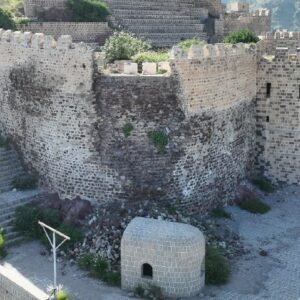
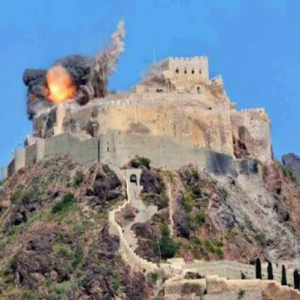
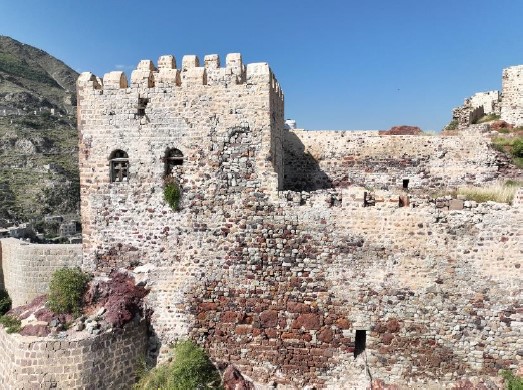
Comprehensive Documentation of Conflict-Related Destruction: The Documentation of damages caused by conflict by a specialized team:
1- Architectural Heritage
The citadel is a prime example of Yemeni Islamic military architecture, featuring massive fortified walls, towers, palaces, mosques, water reservoirs, and gardens built over centuries. Many of these structures are unique in their design, construction techniques, and historical layering. The castle has suffered extensive damage from airstrikes and shelling, particularly during the Yemeni Civil War. Key structures, including the main entrance, towers, and walls, have partially or completely collapsed.
(A) Entrance to the castle:
The main entrance to the castle was severely damaged due to both direct and indirect attacks. This resulted in the collapse of ceilings, external facades, and sections of internal walls.
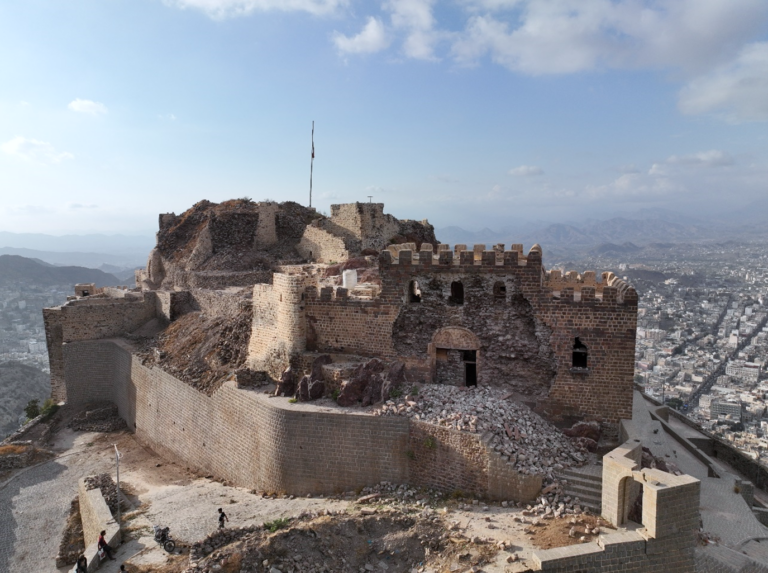
(B) Northeast tower
The front facade of the tower sustained damage from both direct and indirect attacks. Numerous gaps and crumbling stones mar the facade. Additionally, the tower’s gabled roofs, walls, and wooden door suffered damage.
(C) North Tower
The front facade of the North Tower endured direct and indirect attacks, resulting in gaps and fragmentation of some stones.
(E) Southwestern tower The doors and windows in this tower were damaged, and traces of moisture appeared on its exterior façade.
(F) Southwest tower Direct attacks on the southern tower caused openings in its roof, allowing rainwater to pour through and accumulate inside. This led to the appearance of moisture and salinity traces on the external facades of the tower, along with the proliferation of pests and insects on the ceilings and walls.
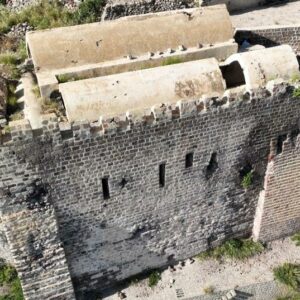
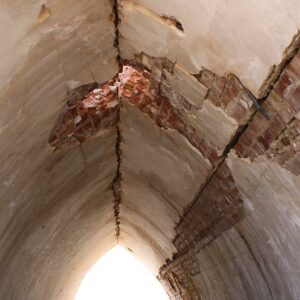
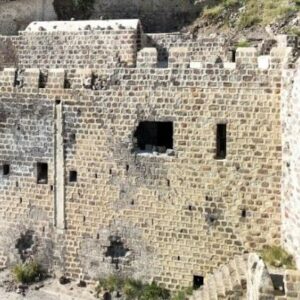
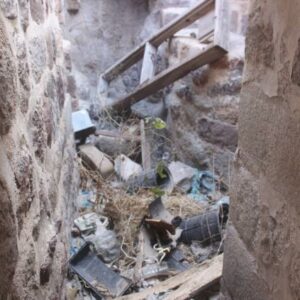
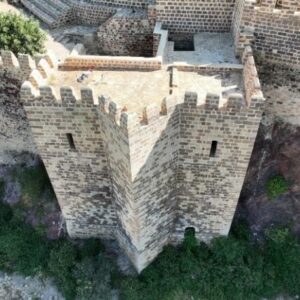
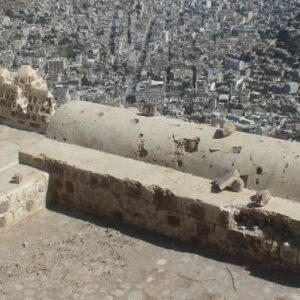
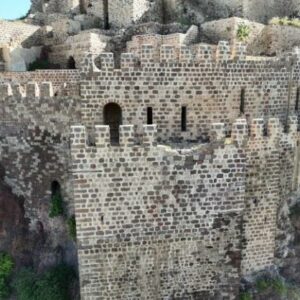
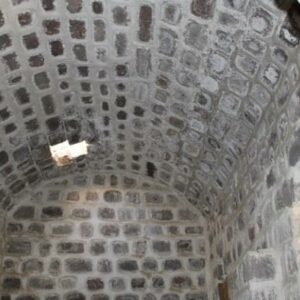
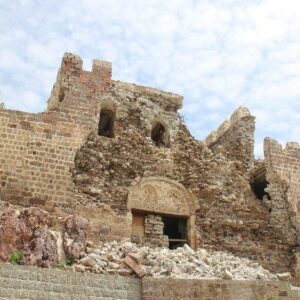
The Museum:
Nestled within the storied walls of Al-Qahira Citadel, the castle’s museum once safeguarded a remarkable collection of artifacts spanning Yemen’s pre-Islamic and Islamic eras-each object a testament to the region’s rich and diverse civilizations. These treasures, from ancient manuscripts to ornate relics, embodied the collective memory and cultural identity of Taiz and Yemen as a whole. Tragically, the museum has been completely demolished amid the ongoing conflict, its invaluable collections now buried beneath rubble and exposed to the relentless threats of decay and theft. The loss of the castle museum is not only a blow to Yemen’s heritage, but also a stark reminder of the vulnerability of cultural memory in times of war, echoing the fate of other irreplaceable sites and collections devastated across the country.
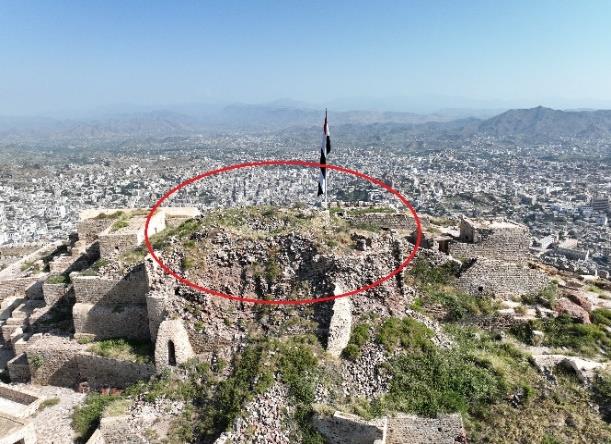
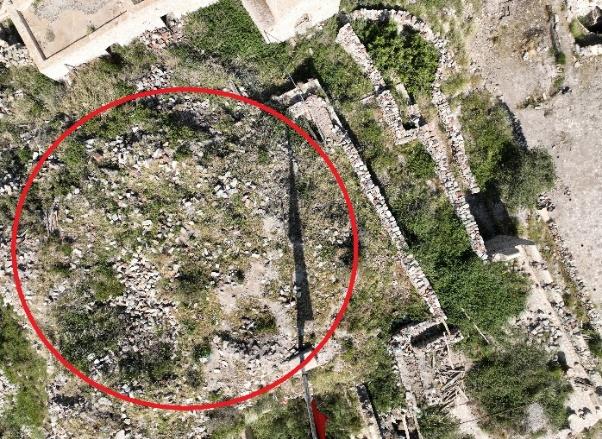
The restoration of Al-Qahira Citadel required meticulous planning and execution to restore its structural integrity and cultural value. The project began with a comprehensive damage assessment, including removing invasive vegetation, debris, and waste that obscured the site. Detailed mapping and documentation were conducted to create a blueprint for guiding the restoration efforts. Structural repairs included rebuilding collapsed walls, reinforcing vulnerable sections using advanced injection techniques, and stabilizing the citadel against future risks. Preventive measures were also implemented, such as constructing retaining walls to prevent falling stones from endangering residents and clearing water drainage channels to reduce the impact of moisture. Decorative elements, including scattered wooden windows and doors, were carefully collected and stored in a secure facility for future conservation. Large trees causing structural damage were removed, and measures were taken to prevent their regrowth.
Modern technology played a crucial role in the restoration process. The University of the West of England (UWE Bristol) developed a 3D light-based point cloud mapping system to document the extent of the damage caused by the conflict. This data-driven approach allowed restoration teams to evaluate the impact of their efforts accurately and plan subsequent conservation phases. These comprehensive interventions not only addressed immediate structural threats but also established a foundation for sustainable preservation.
https://ion.cesium.com/stories/viewer/?id=39032a92-b6b9-4e4e-b11f-8654745891cf#slide-id-194755
The restoration of Al-Qahira Citadel goes beyond repairing a historical landmark—it represents a powerful symbol of resilience and unity for Yemen. By reconnecting the community with its proud heritage, the project has revived cultural pride and strengthened ties between local and global entities committed to preserving humanity’s shared legacy. Through dedication, collaboration, and innovation, this project demonstrates how even in the face of conflict, cultural heritage can inspire hope, foster unity, and pave the way for a brighter future.
Community participation
One of the project’s most significant achievements lies in its community-centered approach. The restoration of Al-Qahira Citadel actively involved local residents, particularly youth, through training programs on traditional construction and reinforcement techniques. This initiative not only equipped them with valuable skills but also fostered a deep sense of ownership and pride in preserving their heritage. Additionally, cultural and educational programs were organized, including school visits and interactive workshops, which encouraged students to explore the citadel’s history and architecture led by Waeey Organization for Heritage and Development. This transformed the site into a living educational space, deepening the local community’s appreciation of their culture and history. Cultural events and festivals held alongside the restoration work reinforced the citadel’s role as a unifying symbol of identity and pride for the people of Taiz.
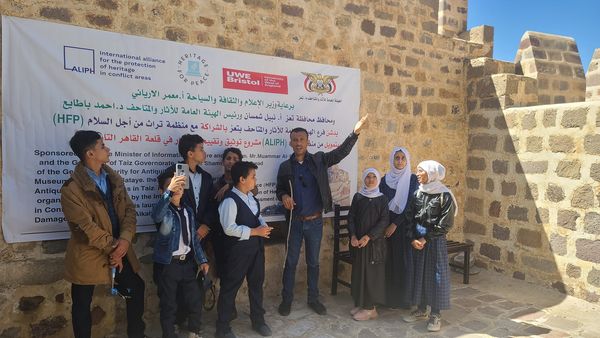
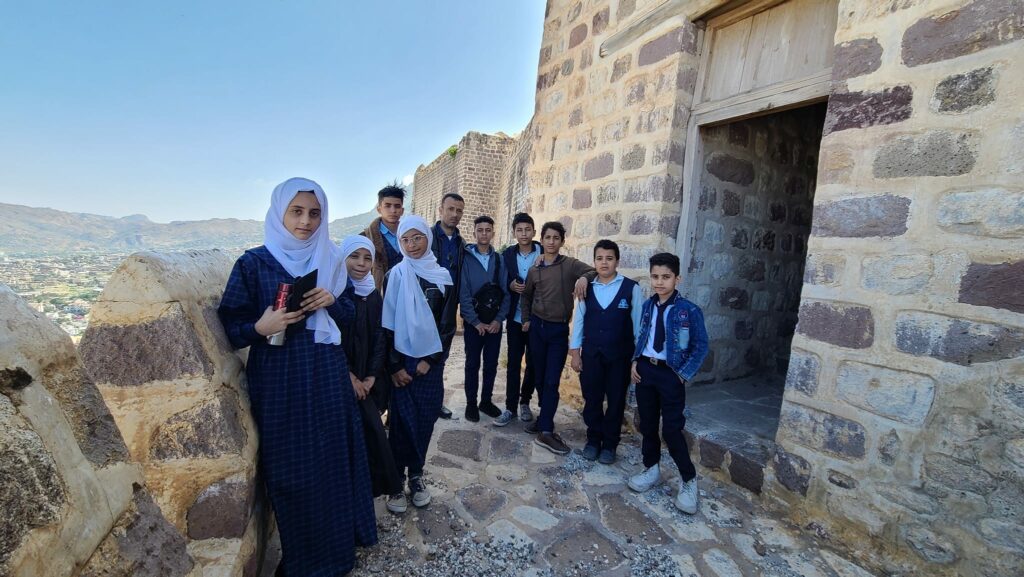
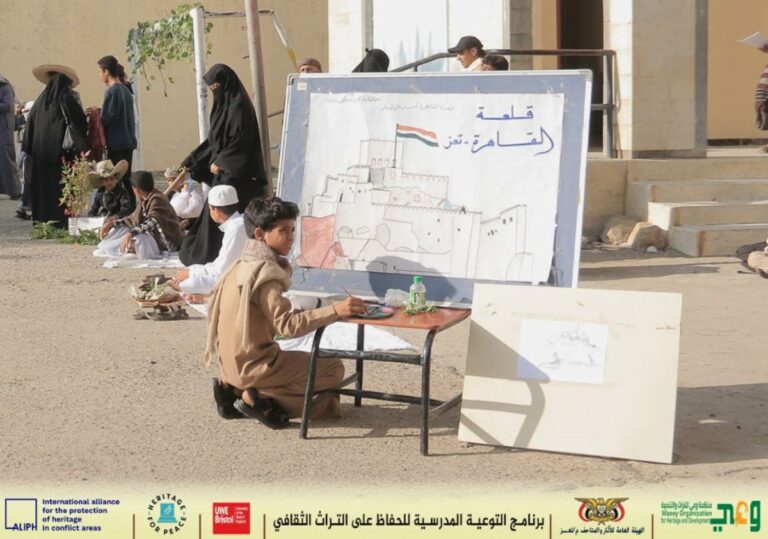
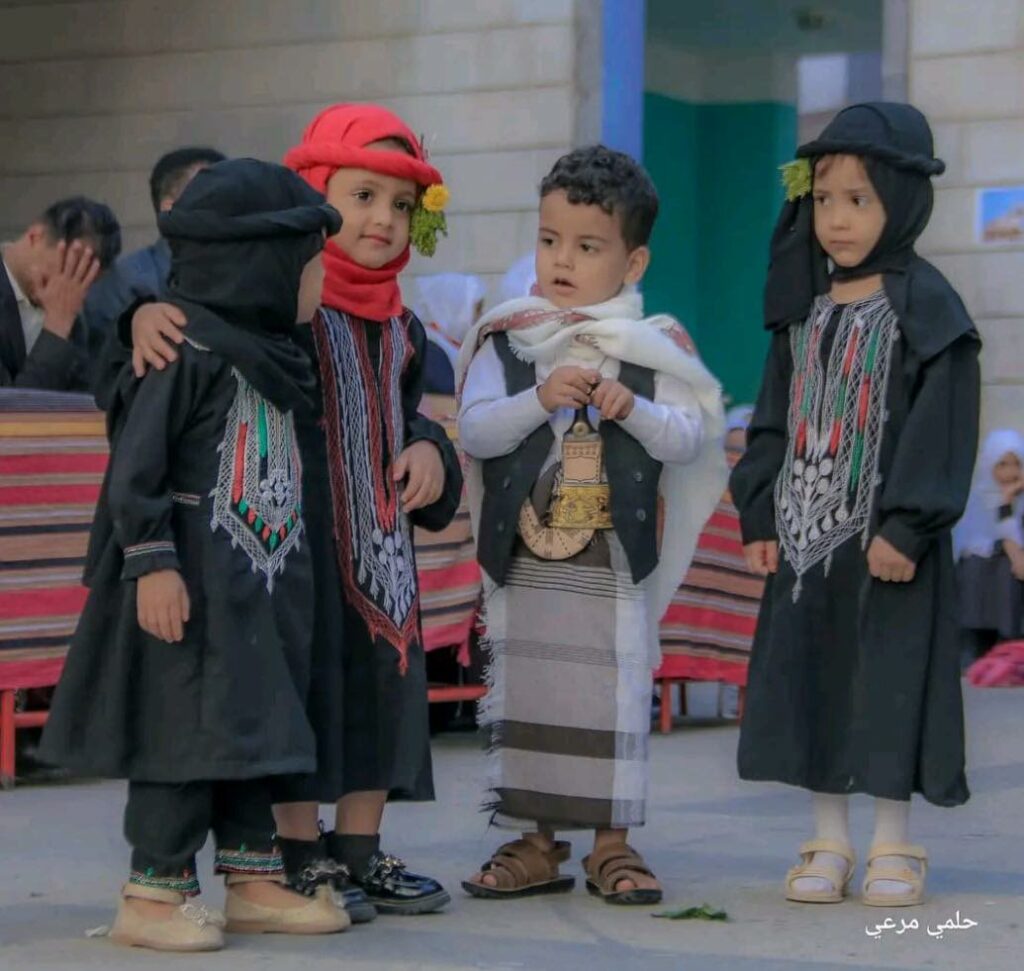
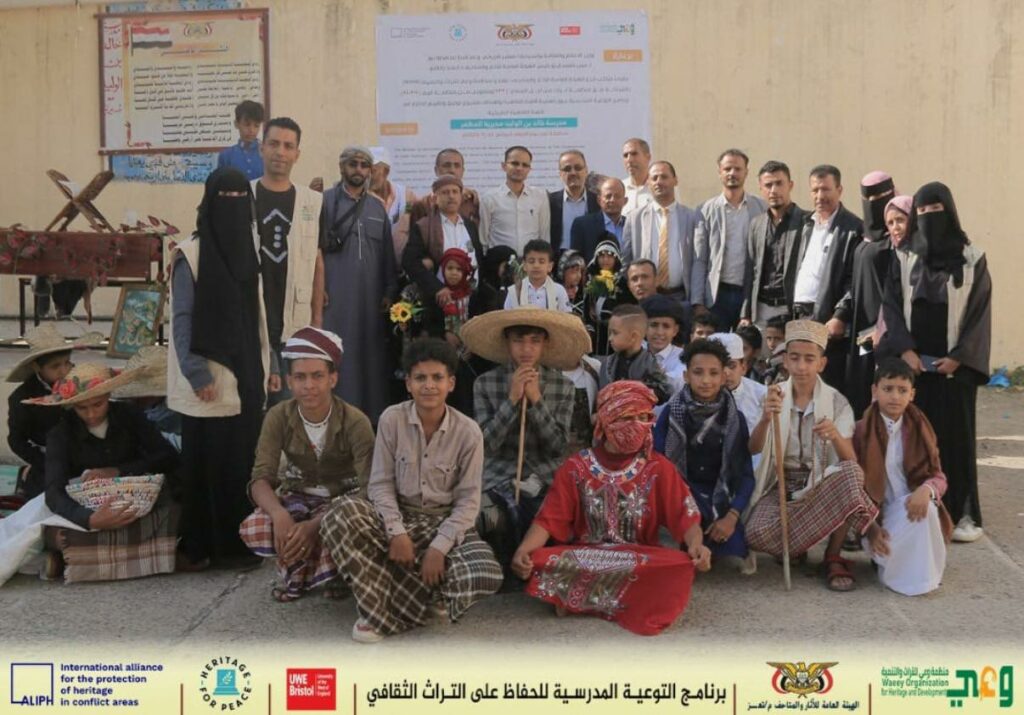
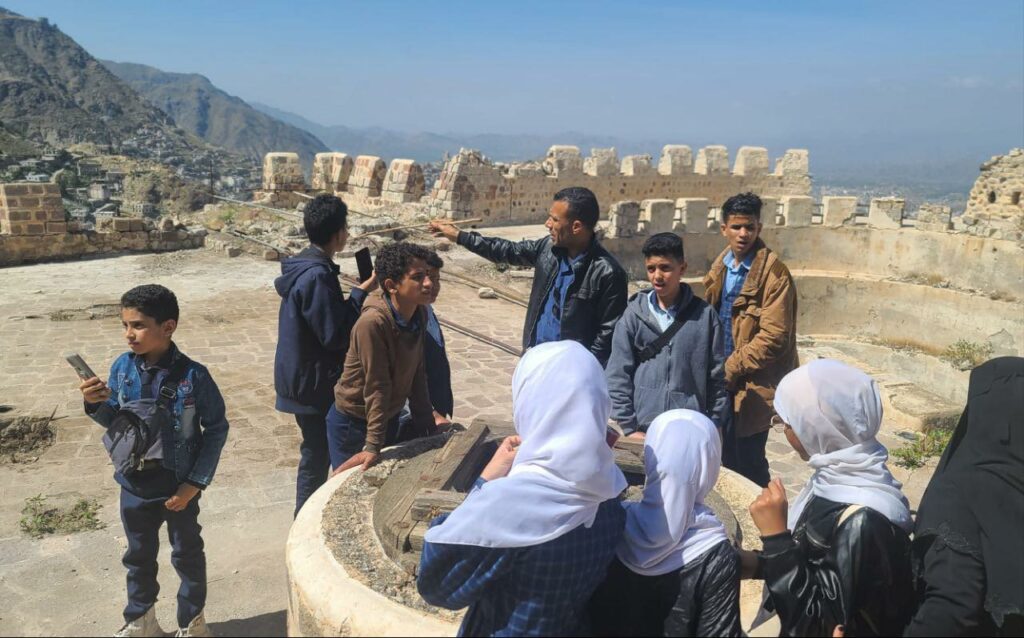
The Project Participants
The Project Lead Participants Participants are the Heritage for Peace organization and the General Authority for Antiquities and Museums in Taiz, supported by international funding from the International Alliance for the Protection of Heritage in Conflict Areas. With assisted technical support from the University of the West of England.
